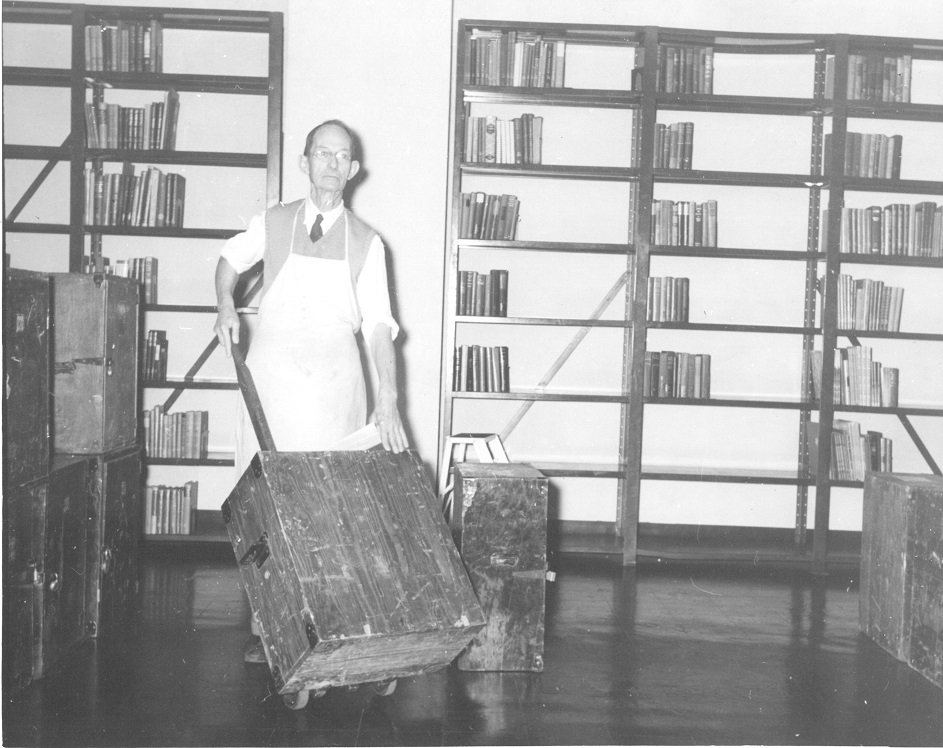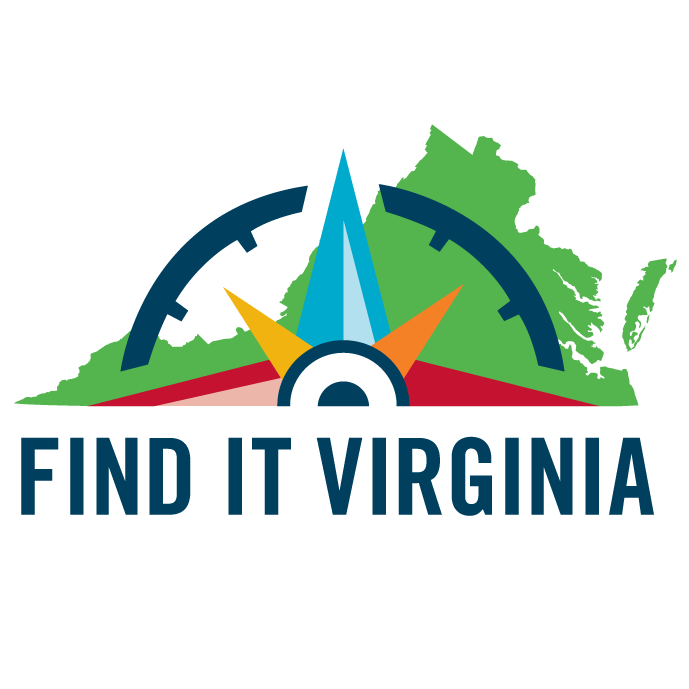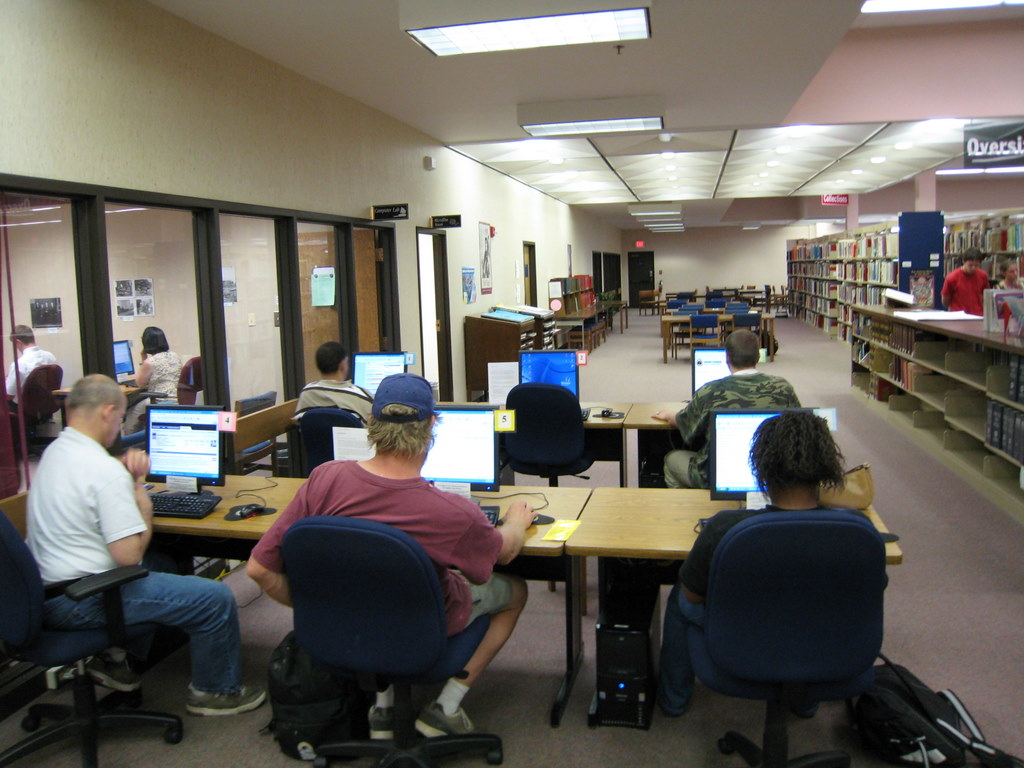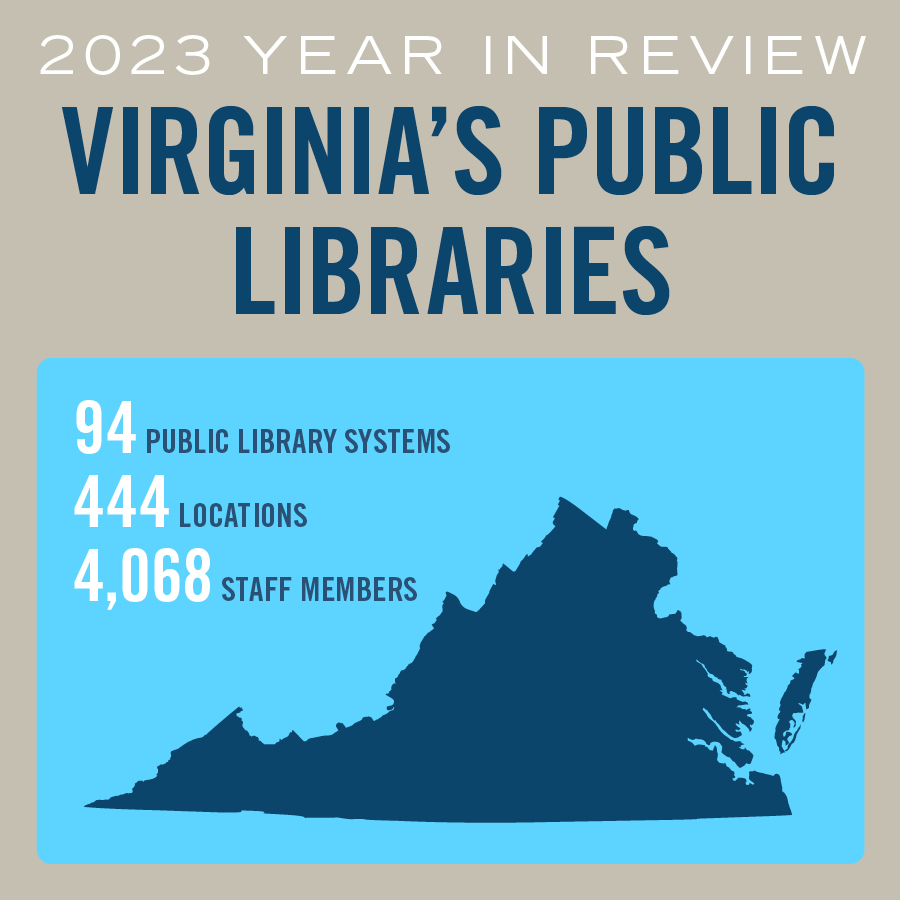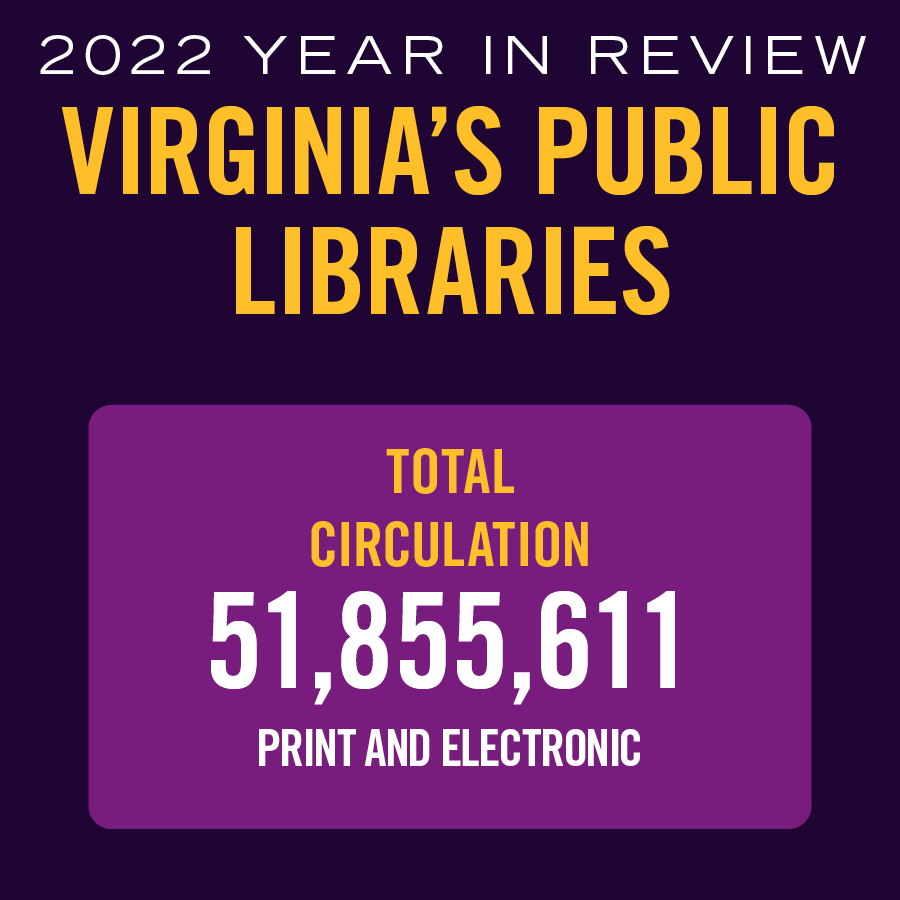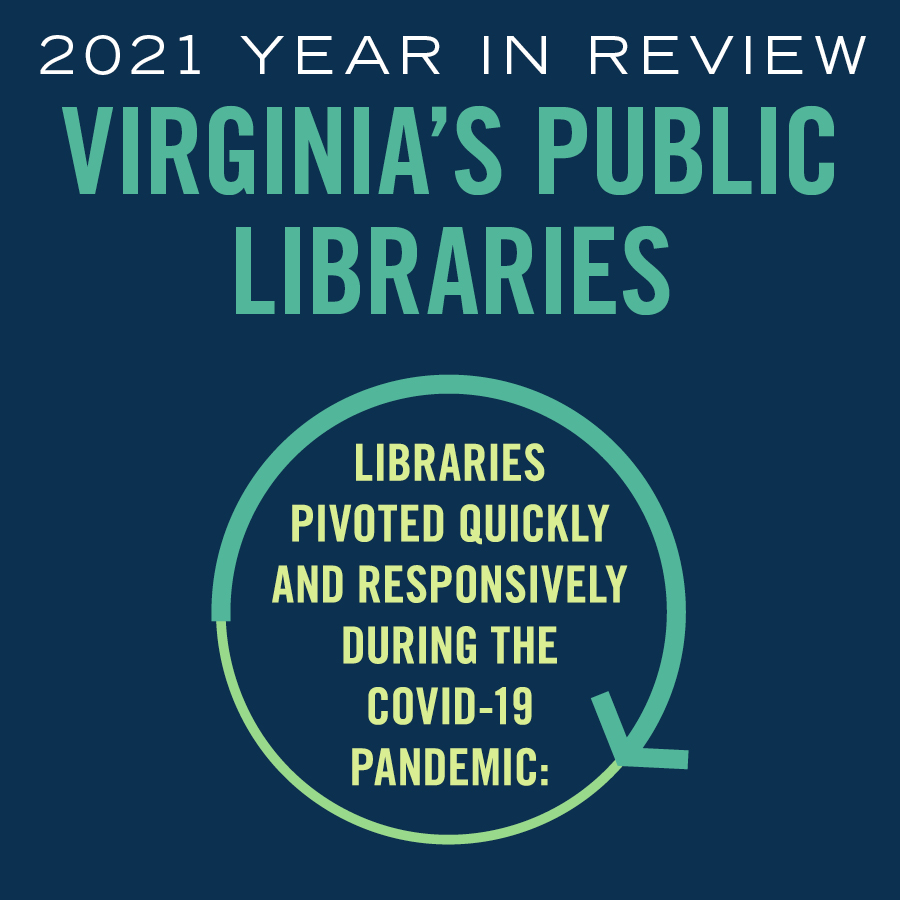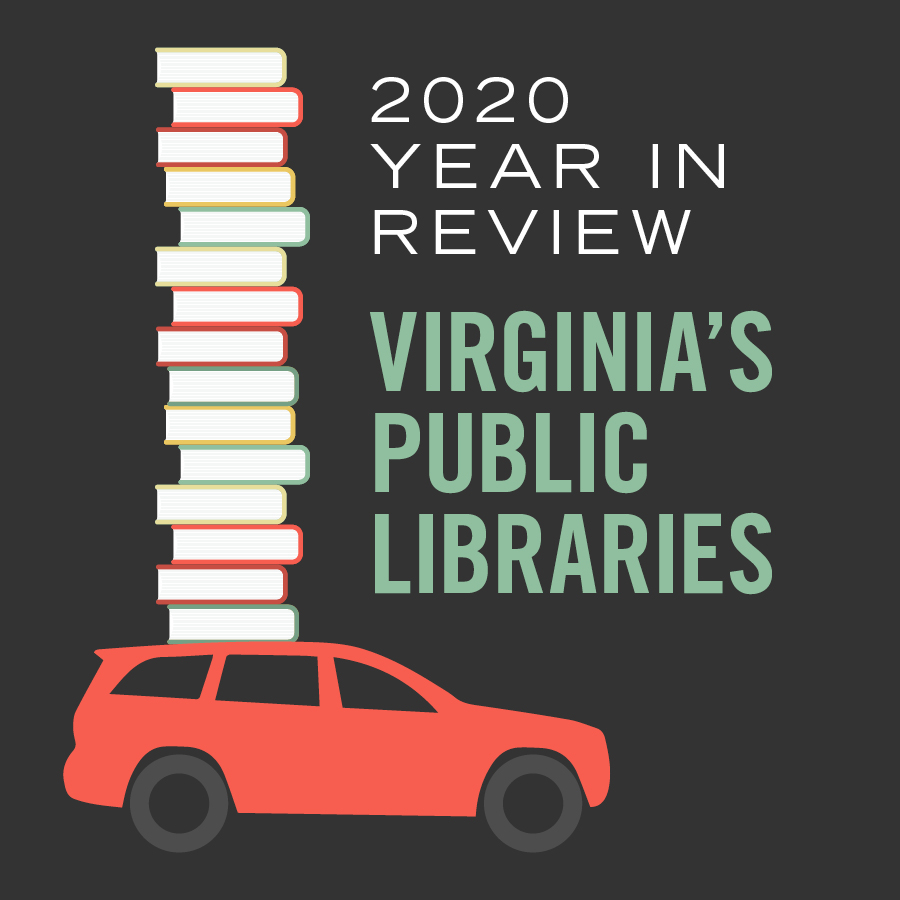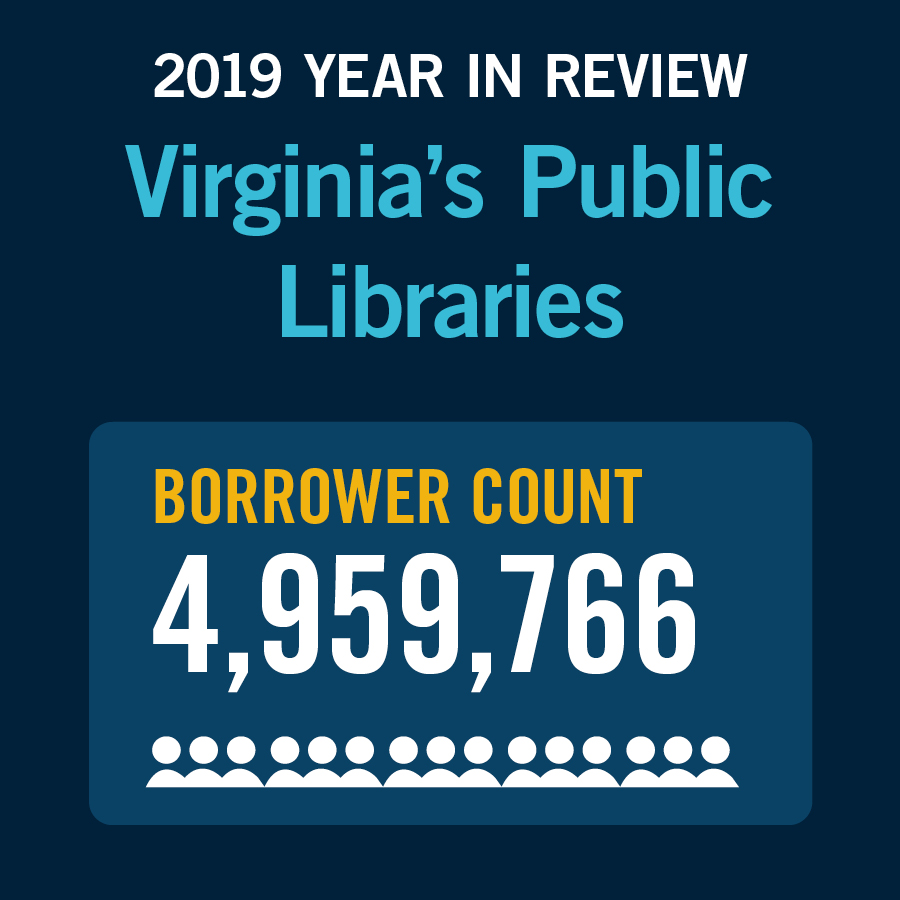
Public Library Services

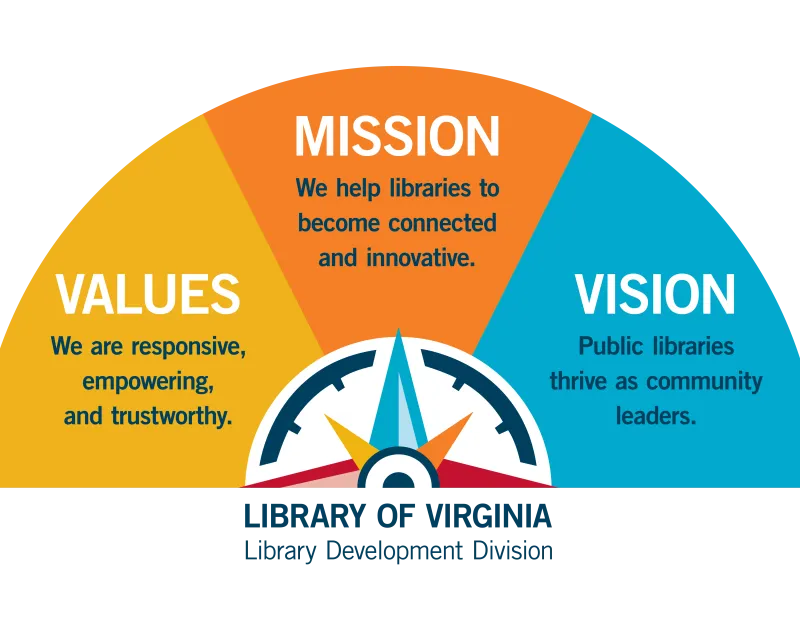
The Library Development Division provides professional consultation and support to the 94 public library systems in Virginia, as well as to library staff in state agencies, schools, colleges, museums, corporations, and private organizations throughout the Commonwealth. Most of this work is made possible by federal funding provided through the Library Services and Technology Act program administered by the Institute of Museum and Library Services.
Get in touch with members of the Library Development Division team.
Library Development Division Work
The Library Services and Technology Act (LSTA) of 1996, a section of the Museum and Library Services Act, promotes access to learning and information resources in all types of libraries for individuals of all ages. Through the legislation, the Institute of Museum and Library Services provides funds to State Library Agencies using a population-based formula. State Libraries may use the appropriation to support statewide initiatives and services; they may also distribute the funds through competitive subgrant competitions or cooperative agreements to public, academic, research, school, and special libraries in their state.
LSTA outlines two broad priorities for this funding. The first is for activities using technology for information sharing between libraries and between libraries and other community services. The second is for programs that make library resources more accessible to urban, rural, or low-income residents, and others who have difficulty using library services.
Virginia Five Year LSTA Plan (2023-2027)
Virginia Five Year LSTA Plan (2018-2022) Evaluation
IMLS Grants to States Program -- View Virginia's profile for data and more information
LSTA Projects
Use the carousels below to explore the projects supported with LSTA funds and contact the project manager.
Librarian Careers
- Library Career Resources
- Qualifications required to hold professional librarian position
- Applying for Librarian’s Professional Certification
A professional librarian position as used in this section is one that requires a knowledge of books and of library technique equivalent to that required for graduation from any accredited library school or one that requires graduation from a school of library science accredited by the American Library Association. If you have not received a degree from an institution in the American Library Association’s Directory of Institutions Offering Accredited Master’s Programs in Library & Information Studies, you are not eligible to receive a Librarian's Professional Certificate.
No funds derived from any state aid shall be paid to any person whose employment does not comply with this section. This section shall not apply to law libraries organized pursuant to Chapter 4 (§ 42.1-60 et seq.), libraries in colleges and universities or to public school libraries. (1988, c. 716; 2004, c. 559; 2006, c. 539; 2012, c. 296.)
Include the following items when submitting the application:
* Completed Application
* A copy of your graduate transcript (official or unofficial) which includes your academic record (grades), the type of degree you received, and the date your degree was conferred.
Please note, the following documents are not acceptable as documentation unless accompanied by transcript:
* Copy of diploma
* DegreeVerify certificate
* Copy of professional librarian's certificate from another state
Please verify that your library school is accredited by the American Library Association. If you have questions or need clarification, please contact Cindy Church, (804) 692-3773.

Promoting Public Libraries in Virginia
- Find your public library
- Find It Virginia
- Nature Backpacks
- Summer Reading Support
- Day by Day VA
Nearly all Virginia State Parks charge a per car parking fee for entrance, which the nature backpack pass covers. Two parks charge a per person fee: Natural Bridge and Southwest Virginia Museum state parks. The nature backpack parking pass covers admission for four people at those two parks. Backpacks also include pocket guides to bugs and slugs, animal tracks, Virginia birds, mammals, Virginia trees and wildflowers and geology; a port-a-bug field observation container; a magnifying lens; a dip net; a compass and binoculars; a ruler; forceps; a Big Foot–themed Leave No Trace Ethics Card; and laminated sheets with suggested activities designed by both Virginia State Parks and the Science Museum of Virginia.
The Library of Virginia supports your library's summer learning programs with federal funds provided by the Institute of Museum of Library Services (IMLS) through the Library Services and Technology Act (LSTA). Contact your local public library to find out more about the summer reading program.
Virginia's Public Libraries Year in Review
Each year, the Library of Virginia Library Development Division collects statistics on public library use in the Commonwealth. These downloadable infographics share some of that data to tell the story of how public libraries support all Virginia residents.
Public Library Data
- Circulation Per Capita
- Expenditures Per Capita
- Holdings Per Capita
- Library Visits Per Capita
- Turnover Rate
Circulation Per Capita Spreadsheet (2019-2023)
Circulation Per Capita Spreadsheet (2018-2022)
Circulation Per Capita Spreadsheet (2017-2021)
Circulation Per Capita Spreadsheet (2016-2020)
Circulation Per Capita Spreadsheet (2015-2019)
Circulation Per Capita Spreadsheet (2014-2018)
Expenditures Per Capita Spreadsheet (2019-2023)
Expenditures Per Capita Spreadsheet (2018-2022)
Expenditures Per Capita Spreadsheet (2017-2021)
Expenditures Per Capita Spreadsheet (2016-2020)
Expenditures Per Capita Spreadsheet (2015-2019)
Expenditures Per Capita Spreadsheet (2014-2018)
Holdings Per Capita Spreadsheet (2019-2023)
Holdings Per Capita Spreadsheet (2017-2021)
Holdings Per Capita Spreadsheet (2016-2020)
Holdings Per Capita Spreadsheet (2015-2019)
Holdings Per Capita Spreadsheet (2014-2018)
Library Visits Per Capita Spreadsheet (2019-2023)
Library Visits Per Capita Spreadsheet (2018-2022)
Library Visits Per Capita Spreadsheet (2017-2021)
Library Visits Per Capita Spreadsheet (2016-2020)
Library Visits Per Capita Spreadsheet (2015-2019)
Library Visits Per Capita Spreadsheet (2014-2018)
Turnover Rate Spreadsheet (2019-2023)
Turnover Rate Spreadsheet (2018-2022)
Turnover Rate Spreadsheet (2017-2021)
Turnover Rate Spreadsheet (2016-2020)
Turnover Rate Spreadsheet (2015-2019)
Turnover Rate Spreadsheet (2014-2018)
State Aid to Libraries
- State Aid Basics
- State Aid Requirements
- Application Process
- Program Administration
- State Aid Formula
Full Funding
Full funding occurs when the General Assembly allocates sufficient funds to permit each system to claim all monies due from the combination of local effort (40% or cap of $250,000), per capita, and square miles served.
Proration of State Aid
The Code of Virginia § 42.1-50 requires the Library of Virginia to prorate the state aid grants any time the General Assembly fails to provide sufficient funds. Massive lobbying efforts by the Virginia Library Association, Library Boards, local government officials and other supporters have been necessary to achieve full funding.
Uses of State Aid
Approximately seventy-six percent of State Aid is used for books and library materials. For many systems, State Aid is the only funding source for materials. Nine percent is used for salaries for professional librarians. The remaining 12% is used for equipment (including computers), furniture, automation systems, etc.
1. Be organized under the appropriate section of the Code of Virginia. Not more than one library in a county or regional library system or a municipal government unit may receive a grant.
2. Submit to the State Library Board:
* Charter, resolution, or other legal papers under which they are organized.
* A copy of the by-laws of the board of trustees, a list of trustees, revised as changes occur.
* A five-year plan, adopted by the governing body of the library service in the area (areas) served. In order to receive continuing grants, this plan must be updated annually.
* A written statement of policy covering such items as: service, personnel, and maintenance of book collections and other materials.
* A copy of the budget for the expenditure of local funds, not including anticipated state and federal funds. This must be submitted annually.
3. Have local operating expenditures of at least 50% of the median statewide local operating expenditures per capita, two - thirds of which must be from taxation or endowment. The median shall be recalculated each biennium. Libraries obtaining aid for the first time or those falling below the 50% median must meet the requirement within five years. Libraries which fall below 50% of the median in local expenditures per capita must submit a plan to the State Library Board for reaching the minimum requirement. The plan must include a schedule of annual increases in local expenditures of not less than 20% of the amount needed to attain local per capita expenditures of 50% of the median within five years.
Local operating expenditures from taxation or endowment for any library, or library system, shall not fall below that of the previous year. In cases where the budgets of all the departments of the local government are reduced below those of the previous year, the library's state grant-in-aid would be reduced. The State Library may require that the amount of such reduction in the library's total expenditure be subtracted from the library's eligibility and that the state grant be reduced accordingly. If the library's budget is reduced and other agencies' budgets are not, then the library would receive no state grant-in- aid and would be ineligible for one until local expenditures shall have again reached or exceeded the local effort at the time of the last previous grant.
The library would be ineligible for any federal funds if local funds are reduced below that of the previous year.
Grants-in-aid shall be used as supplements to local funds.
The amount of any undesignated balance in the local operating budget at the end of the fiscal year which exceeds 10% will be subtracted from the grant which is based on that years expenditures.
4. Have certified librarians in positions as required by state law. Libraries failing to employ a certified librarian in the position of director will have their state aid grant reduced by 25%.
5. Keep open a headquarters library or centrally located branch at least 40 hours a week for a full range of library services. This schedule must include at least three consecutive evening hours an appropriate weekend hours. Evening hours are defined as the hours after 5 p.m.
6. Maintain an up-to-date reference collection and set up procedures for securing materials from other libraries through interlibrary loan.
* Organize materials for convenient use through shelf arrangement, classification and cataloging, and provide a catalog of its resources.
* Stimulate use of materials through publicity, displays, reading lists, story hours, book talks, book and film discussions and other appropriate means.
* Lend guidance in all outlets to individuals in the use of informational, educational, and recreational materials.
* Maintain a collection of currently useful materials by annual additions and systematic removal of items no longer useful to maintain the purposes of quality of its resources. Have a telephone and the number of the telephone listed in the local telephone directory.
* Provide the basic services listed in this section free of charge to the public as required by law.
7. Every regional, county, and city library serving an area of more than 400 square miles, or more than 25,000 persons, must provide some form of extension service acceptable to the board.
8. If the library system has two or more service units, either branches or stations, it must maintain a scheduled, frequent delivery system.
9.The Library Board may, at its discretion, make exceptions for a specified period of time to any single requirement listed above. The exception will be made only if the library can show that a real effort has been made to meet the requirement and that significant progress has been made toward meeting this requirement.
Approved by the State Library Board, March 13, 1991.
Comply with the Requirements of The Library Board (last amended in 1991). The major change affected requirement #3 - the "50% of the median local operating expenditure per capita" replaced a requirement of expenditures of at least $2.00 per capita.
Apply for the grant by June 1 of each year
Code of Virginia § 42.1-1(6): To give direction, assistance and counsel to all libraries in the Commonwealth, to all communities which may propose to establish libraries, and to all persons interested in public libraries, as to means of establishment and administration of such libraries, selection of books, retrieval systems, cataloguing, maintenance, and other details of library management, and to conduct such inspections as are necessary;
Code of Virginia § 42.1-1(7): To engage in such activities in aid of city, county, town, regional and other public libraries as will serve to develop the library system of the Commonwealth;
Code of Virginia § 42.1-1(8): To administer and distribute state and federal library funds in accordance with the law and its own regulations to the city, county, town and regional libraries of the Commonwealth.
Local effort: 40% of every [local] dollar expended by the political subdivision(s) in the system. The grant to any county or city shall not exceed $250,000.
Plus
Per capita: Based on population of area served and number of participating municipalities
30 cents for the first 600,000 persons served (county or city library) plus 10 cents per capita for each additional jurisdiction (regional)
Libraries serving in excess of 600,000 receive 10 cents per capita for remaining population
Plus
Square mileage: $10 per square mile for single jurisdiction (county or city) libraries plus an additional $20 per square mile for libraries serving more than one political jurisdiction (regionals).
Handbooks and Planning Tools
- Advisory Boards
- Governing Boards
- Planning for Library Excellence: Standards for Virginia Public Libraries
- Strategic Planning for Public Libraries
Download the Virginia Public Library Trustee Handbook for Advisory Boards
Download the Virginia Public Library Trustee Handbook for Governing Boards
Download Planning for Library Excellence: Standards for Virginia Public Libraries, 2019
Download the Strategic Planning for VPL 2023 workbook


